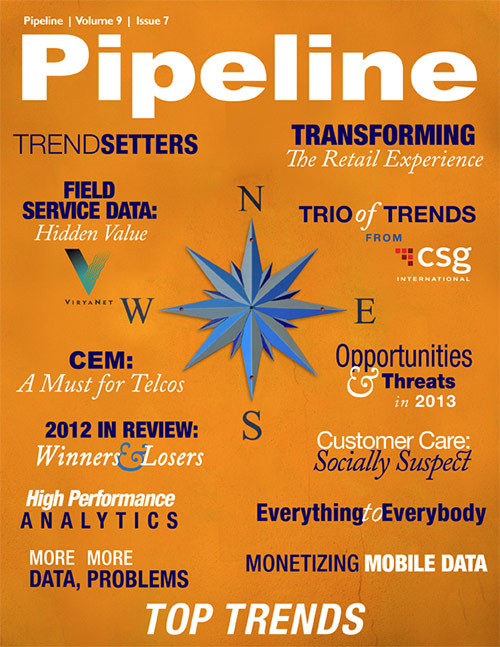Telecommunications Service Providers Make Good on Service Innovation
Smart meters, which monitor consumer usage in real time, also create critical transparency for consumers about how much they’re actually paying per unit of energy, something both consumer advocates and environmentalists applaud.
“The industry is in a very exciting phase right now. Mobile money has not only taken off in Kenya, [but] we’re seeing exponential growth in Tanzania, Uganda and several other countries as well,”
said Lars Kurkinen, a telecom analyst with Berg Insight. He added that a number of services targeting the unbanked have been launched in several of the world’s largest countries, including
Bangladesh, Pakistan, India, Nigeria, Mexico, and Argentina. In some countries mobile-money services have already matured to the extent that significant business opportunities have emerged for
companies from adjacent industries — insurance providers and merchant acquirers, to name just two. “Mobile money is reshaping the market for products such as micro-insurance, and will drive
uptake of electronic payments for goods and services in many emerging economies,” Kurkinen said.
But Ovum warns that operators face uncertainty in the expanding mobile-payments value chain and a real threat from competing over-the-top (OTT) services.
Nonetheless, more providers continue to launch mobile-money services. One of the largest is mobile-payment service Isis, a joint venture between AT&T, T-Mobile USA and Verizon that’s begun
its trial launch period in Austin, Texas, and Salt Lake City, Utah. An app to make purchases on Android phones has also been launched for each carrier.
Smart grid
Water is the enemy of electricity, and when Superstorm Sandy knocked out power to tens of millions of Americans along the Eastern Seaboard at the end of October, power-grid investment was once
again in the headlines.
Mother Nature is an unpredictable mistress, and protecting utility grids from freak natural occurrences will never be a foolproof proposition. But updated smart grids armed with a hearty layer
of information technology for provisioning, troubleshooting and monitoring have just about everything over the antiquated copper lines running to most homes and businesses in the world.
“Smart” grids have been given that moniker because of the standard utility network integration with modern communications networks. This marriage creates a “smarter” network with more
efficiency and the capability for real-time communications with customers, utilities and other entities, e.g., local governments in the case of a natural disaster. Smart grids also drive down
the costs of operation for utilities. According to Pike Research, smart-grid investment will top $200 billion by 2015, lest anyone doubt the health of the market.
Smart meters, which monitor consumer usage in real time, also create critical transparency for consumers about how much they’re actually paying per unit of energy, something both consumer
advocates and environmentalists applaud. In fact, a recent survey from IBM, a company with interests in smart grids and smart metering, noted that one of the largest energy concerns of those
surveyed was lack of consumer understanding.
The findings of the IBM survey of more than 10,000 people across 15 countries expose a major gap between what consumers currently know and what they need to know to reduce energy consumption
and benefit from smarter energy initiatives. Over 30 percent of those polled, for example, had never heard the term “dollar per kwh” (or equivalent currency), and more than 60 percent were
unaware of smart grids or smart meters.





















